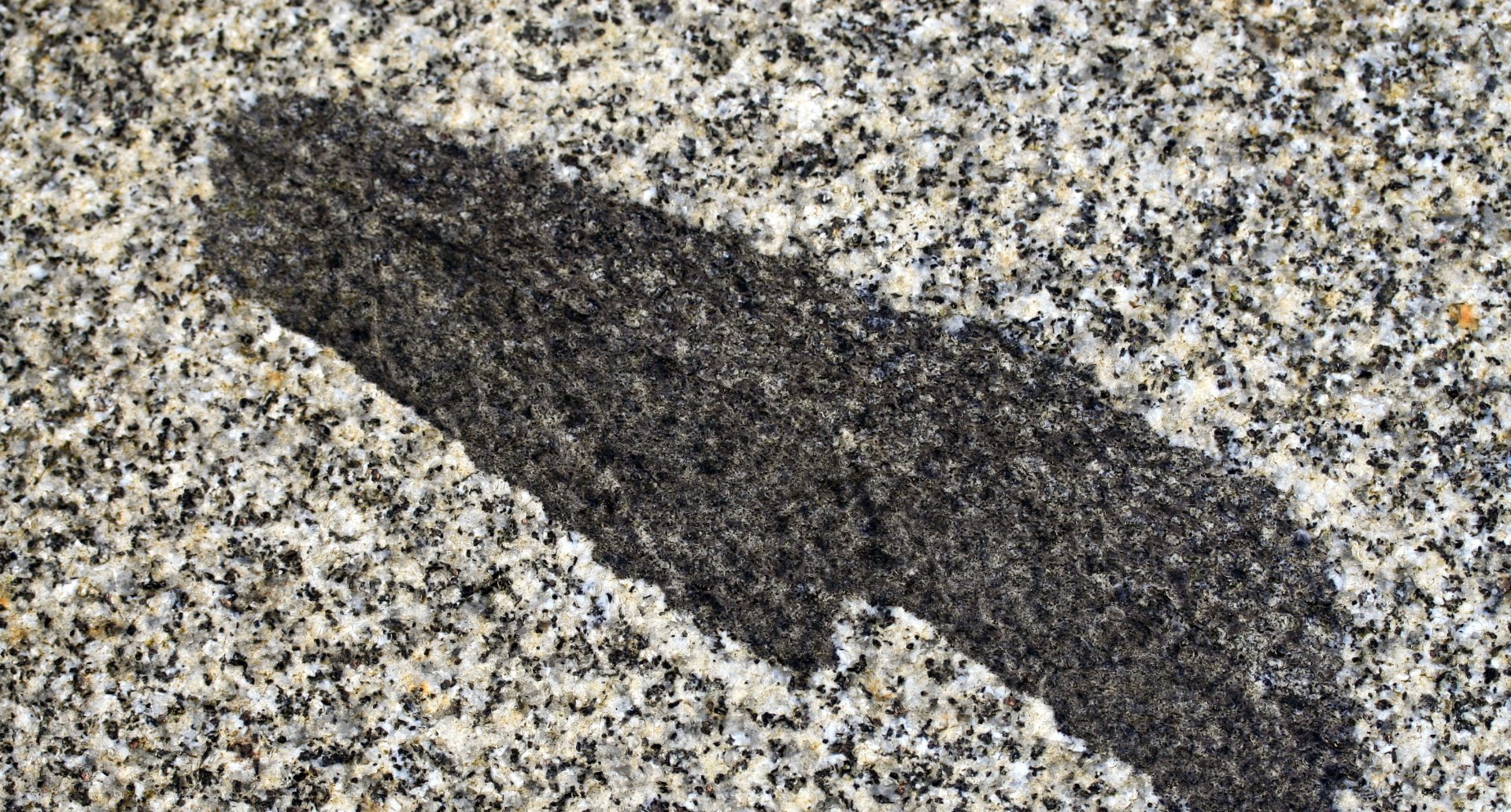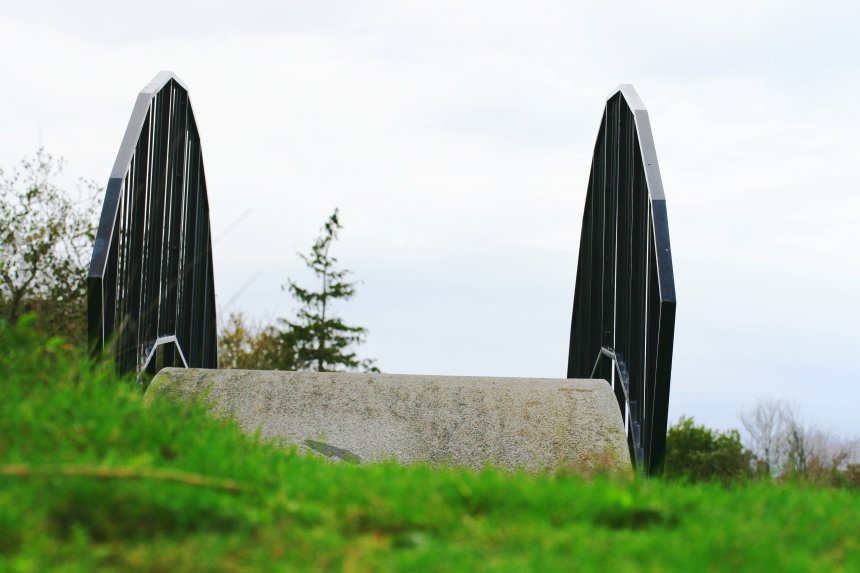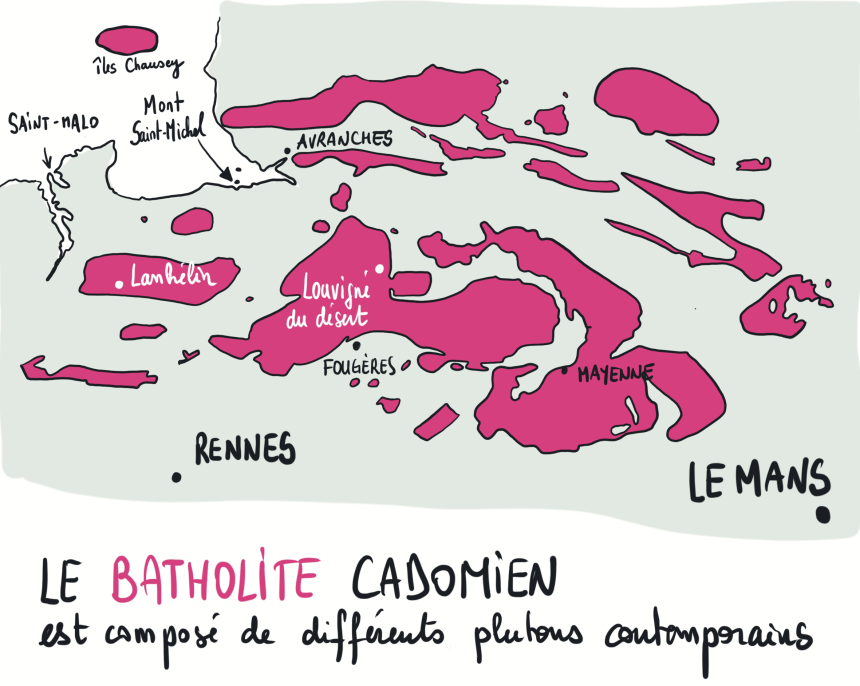Stone : biotite-bearing granodiorite
Type : magmatic rock
Age : 540 million years
Quarry : Godard, Louvigné-du-Désert (Ille-et-Vilaine)
Flaming and Anti-Slip Treatment
The surface of the bridge has been flamed to make it less slippery. This treatment involves using a blowtorch to intensely heat the rock’s surface in order to fracture its minerals. The surface then becomes rougher, providing better grip for our shoes. This process is widely used in roadwork to create anti-slip surfaces.
The “Toad-duct”
Across the surface of the bridge, one can see numerous light or dark inclusions of various shapes and compositions. Quarry workers call these inclusions “crapauds” (literally “toads”). These inclusions have two possible origins: either they are fragments of surrounding rock that were torn off and incorporated into the magma, or they are the result of imperfect mixing between different magmas. Both types of inclusions occur in equal proportion within the granodiorite.
Paving and Multi-Use Material
Granodiorite is marketed both in France and abroad. It is mainly used for paving roads and urban development, but also in construction (masonry or exterior cladding), interior design, monuments, funeral structures, and sculptures. It is also used as aggregate.
When the Continental Crust Melts
The “blue-grey granite of Louvigné” is not actually a granite, but a granodiorite. It has a light grey color and a coarse-grained texture (grains of 1 to 5 mm). It is mainly composed of plagioclase feldspars (33% by volume), quartz (29%), potassium feldspars (21%), and biotite (16%). Its high aluminum content confirms its origin from the continental crust (resulting from its partial melting). This granodiorite is part of the Cadomian batholith, a large intrusive super-pluton emplaced in Brioverian sediments toward the end of the Precambrian, around 540 million years ago.


